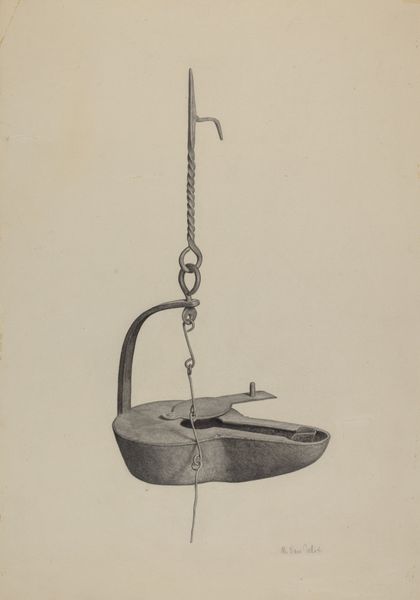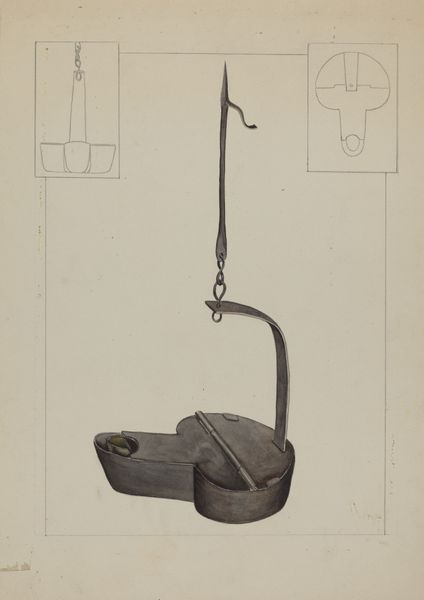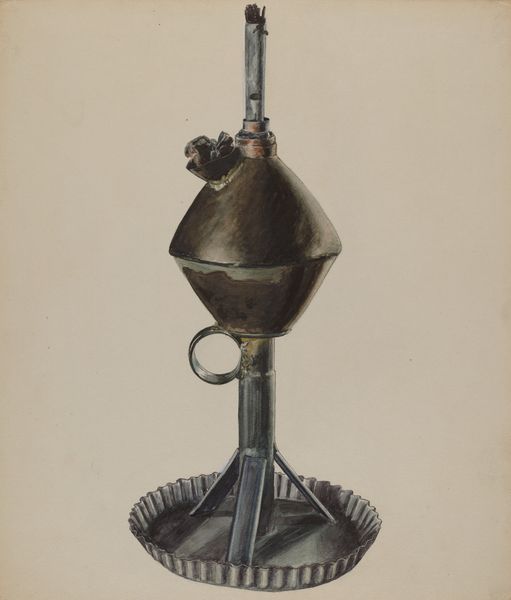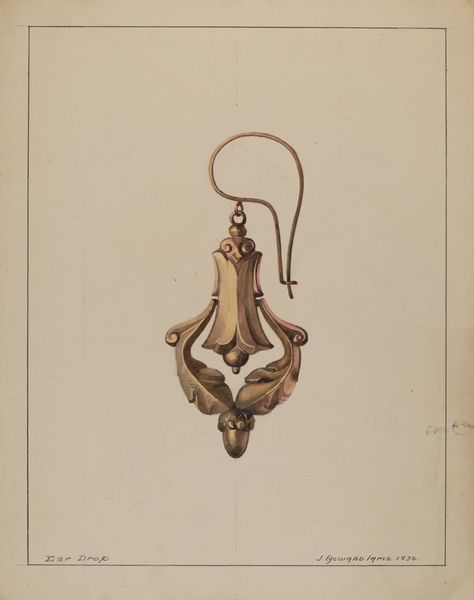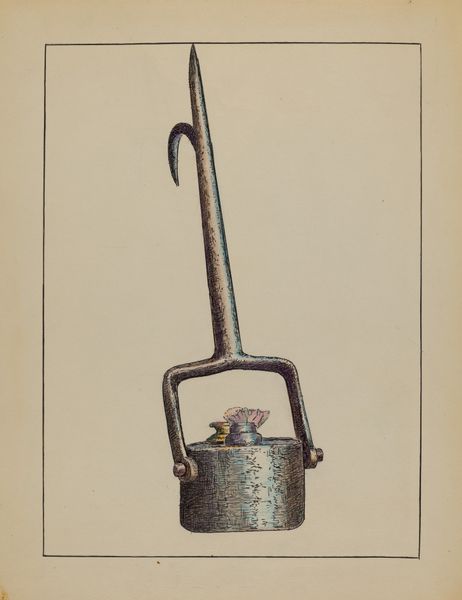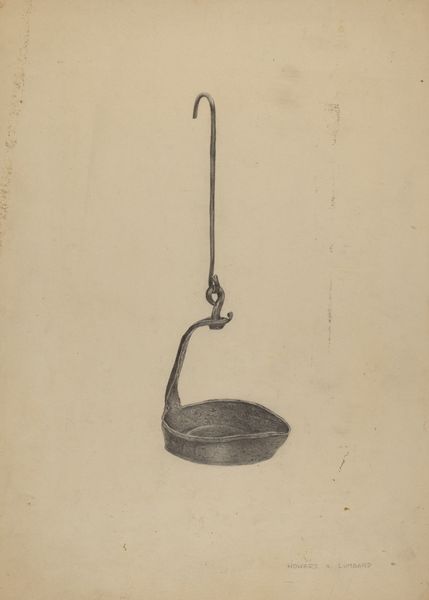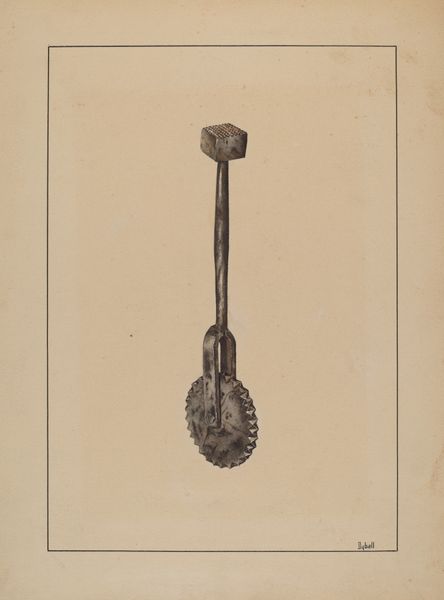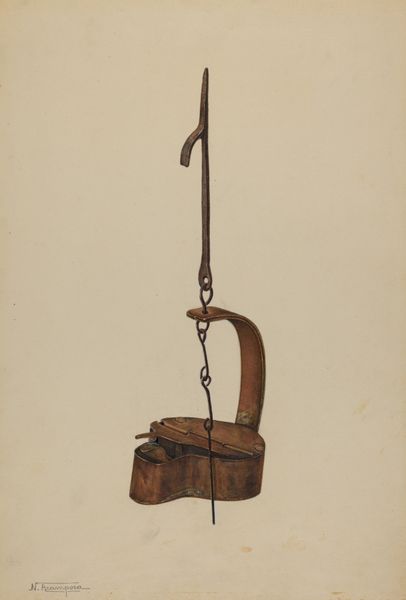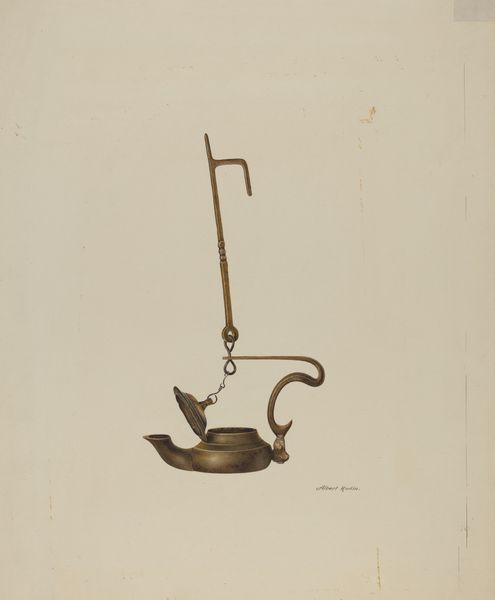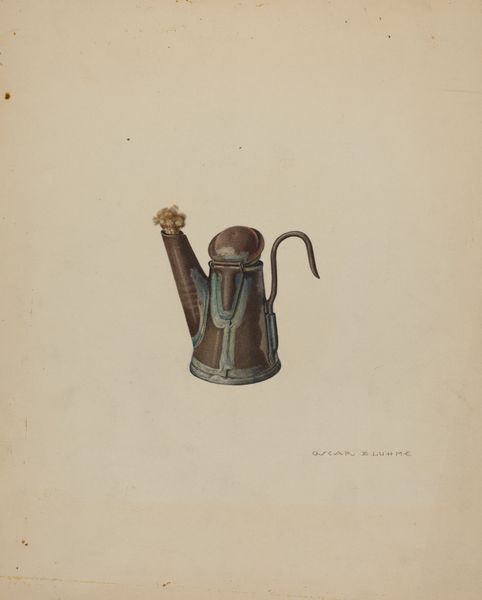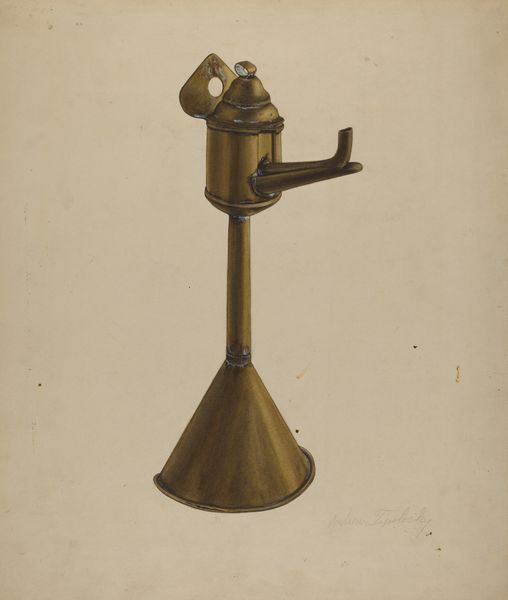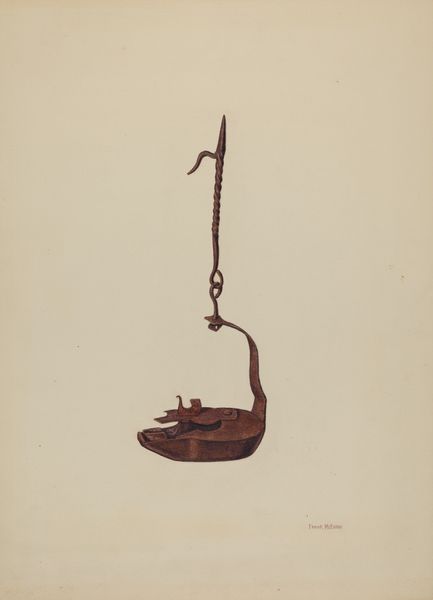
drawing, paper, pencil
#
drawing
#
paper
#
pencil drawing
#
geometric
#
pencil
#
academic-art
Dimensions: overall: 23 x 16.5 cm (9 1/16 x 6 1/2 in.) Original IAD Object: 4 1/2" long; 8" high
Copyright: National Gallery of Art: CC0 1.0
Curator: This is a pencil drawing entitled "Lamp" made on paper, around 1936, by Charlotte Winter. It's rendered in a highly academic style. What's your initial take? Editor: Somber. There’s a stillness to the piece, the grey tones evoking a kind of industrial melancholy, though it also feels quite precise, technically proficient. Curator: Indeed. Consider the object itself: a lamp. For centuries, lamps, fire, have been symbols of knowledge, of enlightenment, literally and metaphorically dispelling darkness. Editor: Absolutely, but who has access to that light? To me, the object depicted feels inaccessible, perhaps belonging to a bygone era of privilege and heavy ornamentation. It reminds me that access to knowledge has historically been restricted by class, gender, and race. Curator: That’s a very potent reading. The geometric forms incorporated in its design—look at the triangular, almost shield-like component—these could suggest a sense of hierarchy and protection, perhaps of the knowledge that lamp illuminates. What cultural memories are activated for you when you observe this kind of ornamentation? Editor: I see the faint outlines of ornamentation almost like embedded ancestral stories. They're obscured yet present, signaling a hidden legacy—maybe one of industrialism and the power dynamics it created. Winter’s choice to render this lamp with such exacting detail feels like an almost reverent act. I question what that reverence signifies in the face of the often exploitative contexts from which this kind of opulence arose. Curator: It certainly invites reflection on those themes of privilege and access, not just historically, but also in our contemporary moment, given continuing disparities and inequities. The artist seems intent on honoring something enduring, though—perhaps a particular craft or industrial design sensibility. Editor: It’s interesting you bring that up, perhaps its about that period in design, showing how it’s influence still flickers today. Curator: Exactly. It serves as an elegant and perhaps uneasy illumination, in both senses. Editor: Yes, uneasily elegant. It throws both literal and metaphorical light into the corners, exposing shadows worth exploring.
Comments
No comments
Be the first to comment and join the conversation on the ultimate creative platform.

